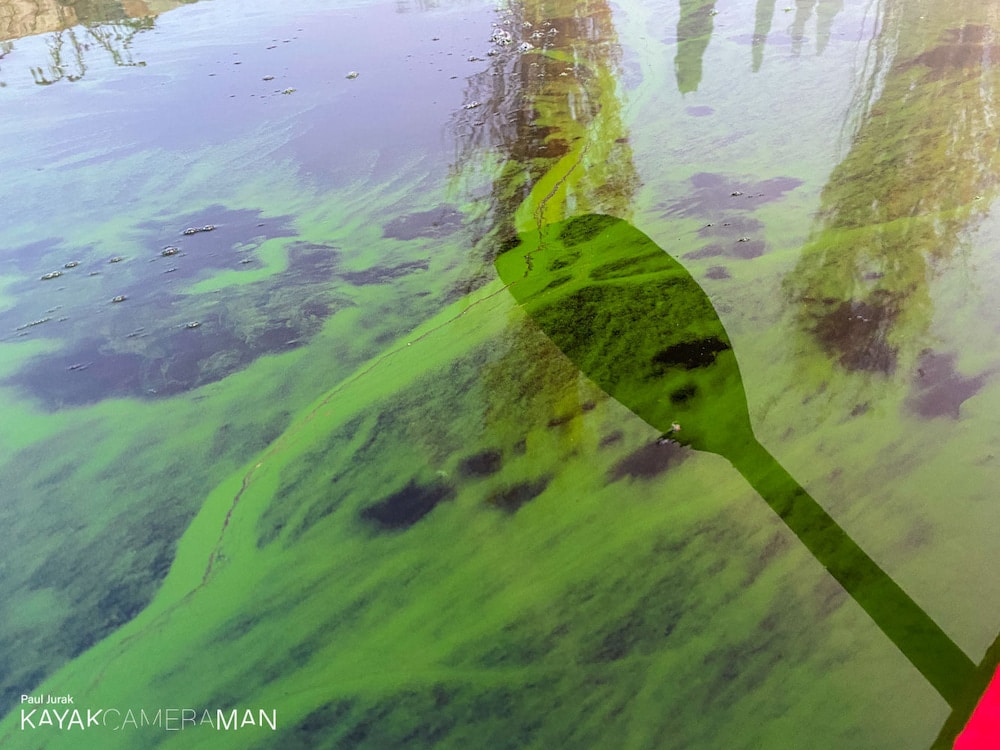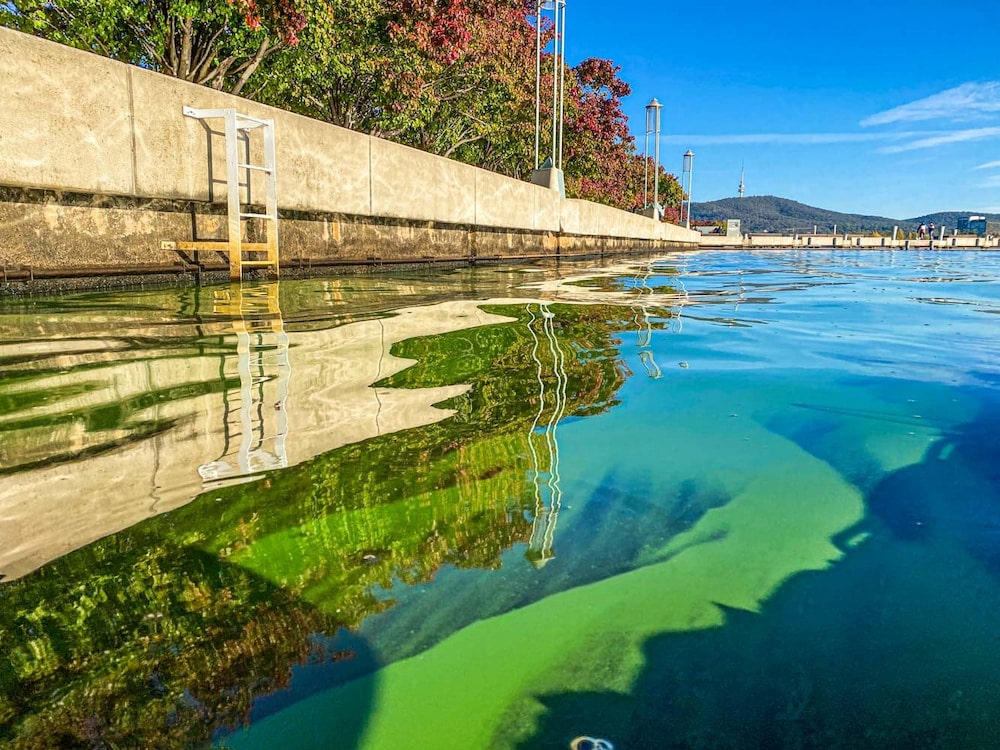Passers-by were disgusted to see – and smell – blue-green algae on Canberra’s Lake Burley Griffin over the long weekend. Vivid, toxic green scum trailed through the water like an oil slick. The good news, experts say, is that it won’t last long.
Cameraman Paul Jurak went kayaking on the lake, having recently resumed boating after a back injury nine months ago.
“As I launched 30 minutes before sunrise, I couldn’t see the algae, but knew of its presence due to the odour. Upon sunrise I was surprised at the level of concentration.”
The expanse of blooms reminded him of the Okefonokee Swamp, one of the biggest bogs in North America.

“I am no algae expert, but one thing I know for certain is that on the day the images were taken, I’m glad I was in a kayak rather than swimming!”
Mr Jurak said he might venture out this weekend, but will definitely check the algae concentration levels and any lake warnings/closures from the National Capital Authority, which manages the lake.
Canberra Daily’s editor Julie Samaras was shocked by the “sight and whiff” of the algal bloom at Regatta Point, she wrote in her column this week. “Although a striking shade of green, the lake water should not be that hue anytime, let alone in late April.”
A warmer-than-normal autumn had resulted in a late blue-green algae bloom across Canberra, a National Capital Authority spokesperson said. This was common, and would reduce over the next few weeks as the water temperature dropped.
In the short term, practical options to treat blue-green algae in the lake were limited, the NCA spokesperson said. The NCA and the University of Canberra were working to better understand the lake system and manage its water quality, building on research UC completed for the ACT Government on Lake Tuggeranong.
Their research showed that the stormwater system washed high levels of nutrients – leaves from eucalyptus and deciduous trees, lawn clippings, fertilisers, and soil – from roads into lakes, feeding algal blooms.

The ACT Government said it was prioritising programs and projects that reduced the inflow of nutrient pollution and lowered their chances of flowing into the lakes each time it rained. For instance, floating wetlands were recently installed in Lake Tuggeranong to soak up nutrients.
“We are taking a whole-of-government approach to the issue of algal blooms … to get the best results we possibly can for our environment,” a spokesperson said.
The government regularly tested water quality and monitored algae and bacteria in waterways, particularly during the summer swimming season (October – April).
The government worked on reducing soil erosion, increasing rain infiltration into soils, and improving fertilising, watering, mowing, and street sweeping. From May to August, it would remove deciduous leaf litter from street trees in the inner north and south suburbs.
The government also provided health advice to the community on algal blooms and told them how they could help to keep waterways healthy. All sectors – community, commercial, industry and government – could prevent nutrients getting onto roads and other paved areas where rain can wash them down the drain, a spokesperson said.
As of 22 April, three Lake Tuggeranong recreational areas – Tuggeranong Town Park, Nguru Beach, and Ngadyung Beach – are closed due to blue-green algae.



